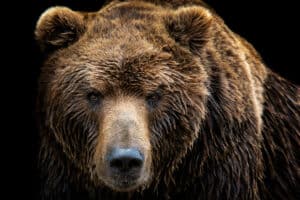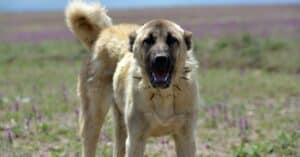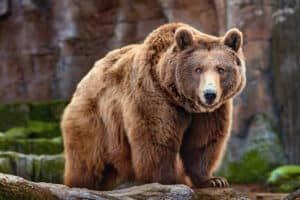Native and Indigenous Americans are well-known for their deep spirituality intertwined with the natural world and the animals that inhabit it. Spirit animals are one way North America’s indigenous peoples connect with the world’s spirits. Let’s look at the Bear spirit and what that spirit represents to indigenous peoples. Let’s dive in!
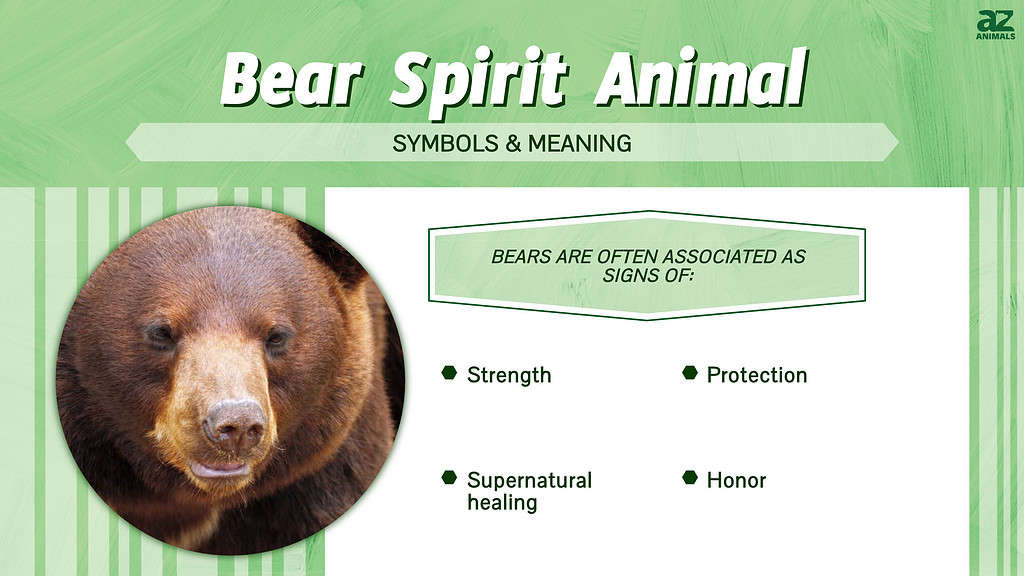
Disclaimer
This article is not written by a Native, Indigenous, or First Nations person. We do not claim to be an authoritative source regarding indigenous cultures. However, we’ve tried referencing and including as many indigenous sources as possible. The purpose of this article is for educational and entertainment purposes only.
Additionally, A-Z Animals requests that our readers hear, listen to, and abide by the words of indigenous people when they ask us not to appropriate spirit animals into our daily lives and education. These concepts are sacred rites and zeitgeists for indigenous people.
For more information, please check out this source from the National Museum of the American Indian that explains why non-Native people should not appropriate spirit animals.
What Is a Spirit Animal? What Do Spirit Animals Mean to Indigenous Americans?
Spirit animals do not have an inherent meaning to most Native American tribes. Instead, your interactions with your spirit animal determine the meaning behind it. Many non-Native people erroneously believe that a spirit animal represents who you are on the inside, like a Zodiac sign. But this is not what spirit animals mean to the Native people.
Spirit animals are teachers, guides, and messengers. These spirits appear to help guide one through life. A person is not limited to just one spirit animal; many animal spirits may visit them throughout life to help them through different life events.
While a spirit animal may not have an inherent meaning to a person, the spirit carries a general meaning known to tribes. Some spirits are associated with clans within a tribe. These clans are determined by the spirits associated with the people in the clan. The Wolf and Kit Fox Societies of the Lakota people come to mind when thinking of spirit animal clans.
To find a spirit animal, most Native Americans recommend you merely ask your spirit animal to reveal itself. Spirit animals are not secretive or shadowy figures; simply ask, and you shall receive.
Tribal Trade Co has an excellent miniguide for determining your spirit animal. They outline to ask yourself whether you have ever felt drawn to a specific animal, whether any particular animal shows up often in your dreams, or whether you’ve ever felt particularly frightened or mystified by a specific animal. These feelings could indicate that one special animal has visited you as a guiding spirit.
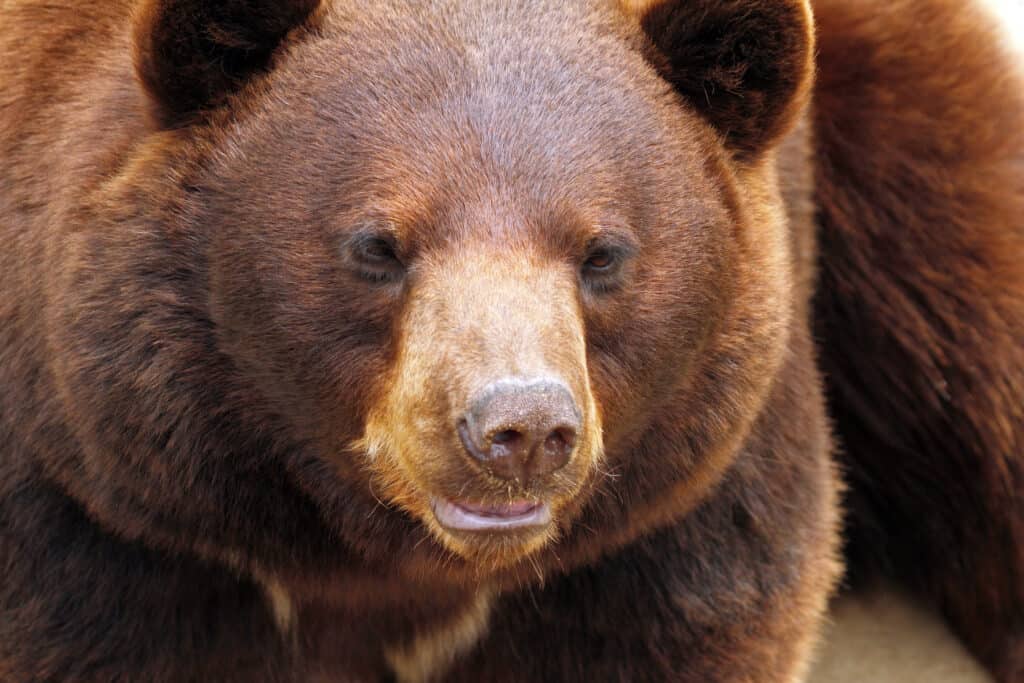
To find a spirit animal, most Native Americans recommend you merely ask your spirit animal to reveal itself.
©M Rose/Shutterstock.com
Spirit Animals vs. Birth Totems
Birth totems are more like what the average American thinks of as the Zodiac. Like our Zodiac, your birth totem is determined by your birth time and date. The animal associated with your birth totem is supposed to determine what kind of person you grow into.
The birth totem carries the meaning that most Americans erroneously attribute to the spirit animal. However, no two tribes have the same birth totems, and some tribes do not use birth totems at all. So, the meaning of your birth totem will vary.
Spirit Animals vs. Power Animals
The power animal is another spirit that may visit someone throughout their life. The purpose of the power animal is to invoke the mystical properties of the animal spirit in question when you require its power.
You are not limited to just one power animal. You may need the assistance of many animals as you progress through your life. An excellent example of a power animal is the fox which is thought to be able to lead medicine men to rare medicinal herbs. A medicine man may invoke the fox’s power during an illness outbreak or when searching for rare plants.
What Does the Bear Spirit Animal Represent?
The bear spirit represents many things, but above all, the bear spirit is the chief of strength and protection. Bears are also well-known for their prowess as healers. Bears are one of the few animals that use medicinal herbs on themselves. Thus, it’s believed that bears have supernatural healing abilities, able to heal their own wounds and practice medicine on themselves.
The bear has its own clan in the indigenous traditions. Those who are a part of the bear clan typically possess vast knowledge of medicinal herbs and treatments. A bear claw may be worn by a warrior seeking to have the supernatural healing of a bear in battle or by a medicine man looking to impart the bear’s healing wisdom to his tribe members.
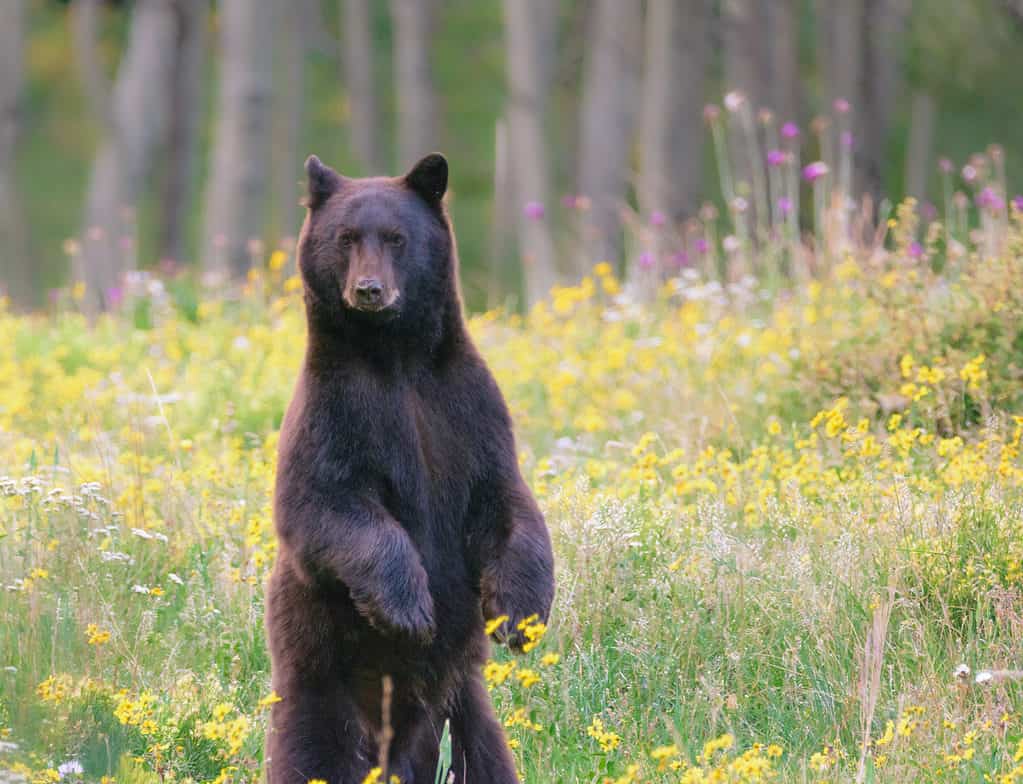
Many indigenous people believe the bear spirit animal is linked to healing abilities.
©Constance Mahoney/Shutterstock.com
Tribe-Specific Bear Spirit Animal Legends in First Nations Cultures
Many tribes have specific legends and gods regarding the bear. The bear typically holds a place of great reverence to the Native Americans as they represent protection, strength, and medicine. However, there are also some more frightening legends, like those told of the Yakwawiak, the Naked Bears.
Naked Bear, Big Rump Bear, and Stiff-Legged Bear
The Naked Bear goes by many names, but it is a figure that appears in the mythos of many tribes, including the Mohicans, Shawnee, Cree, Penobscot, and Iroquois. It is also known as Big Rump Bear and Stiff-Legged Bear, depending on which tribe is telling the story.
The Naked Bear is a man-eating monster legend. It is a giant, hairless bear. Many believe Naked Bear’s hair fell out as a result of its habit of eating people. The Naked Bear’s skin is believed to be nearly impervious to human weapons. Legends say the bear can only be killed by shooting arrows into the soles of its feet.
Some evidence supports that Naked Bear was a woolly mammoth or mastodon fossil, and the legend has carried over from the time of the glaciers until now.
Muwin
Conversely, the Micmac tribe has a more charitable bear god known as Muwin. Muwin is portrayed as strong and honorable but somewhat dull and slow-witted. As a result, Muwin typically plays either the “straight man” role or becomes the victim of tricks from weaker but more clever spirits such as the Rabbit, Wolverine, or Raccoon. Some stories, however, portray Muwin winning in fights against other spirits due to his superior moral qualities.
How Do I Honor my Spirit Animal?
Honoring your spirit animal is a crucial part of having a spirit animal. After all, this spirit has taken its time to guide and teach you. So, you should show your gratitude by honoring it.
How you honor your spirit animal is unique to you and your spirit animal. You will learn how to honor your spirit animal by interacting with it. For example, many Native Americans create beadwork featuring their spirit animals to wear on their regalia. Dancers at Powwows and other festivals may also mimic the body language of their spirit animals to honor them.
As you develop your relationship with your spirit animals, you will learn what they like and how best to honor them.
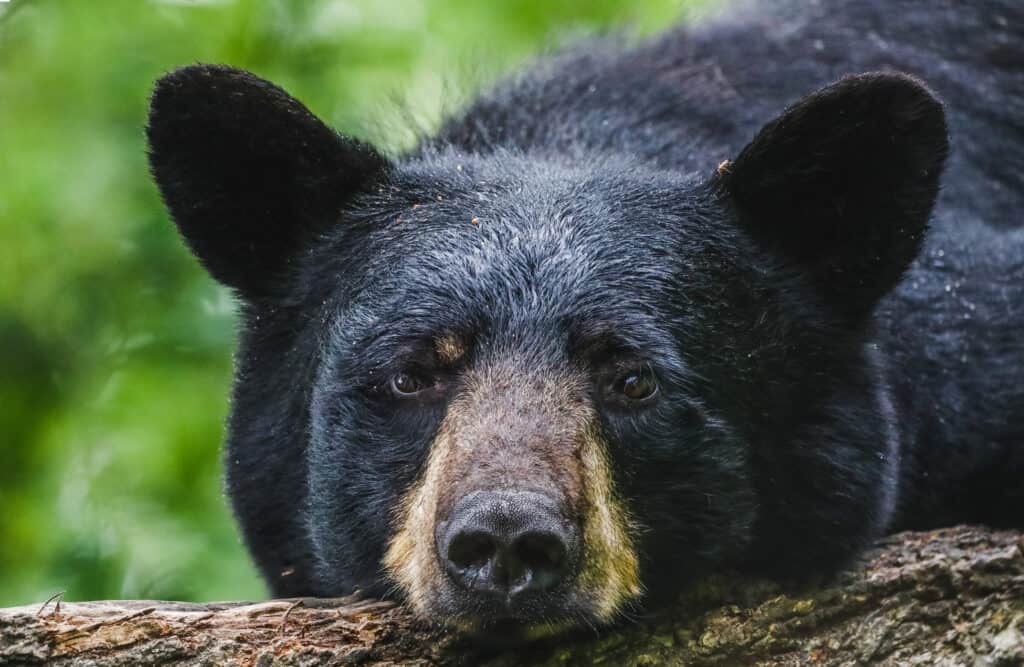
As you develop your relationship with your spirit animals, you will learn what they like and how best to honor them.
©iStock.com/Mandy Fuller Photography
Final Thoughts
Spirit animals are one aspect of Native American and Indigenous people’s spirituality. There are many other beautiful customs that you can learn about by visiting museums and other cultural centers to keep Native American traditions and languages alive.
Spirit animals are not to be appropriated or used for fun. You should treat this belief with reverence, similarly to your own personal spiritual beliefs. We always suggest doing your research and supporting teachers and educators from indigenous heritage.
The photo featured at the top of this post is © PhotoBarmaley/Shutterstock.com
Sources
- UniGuide, Available here: https://www.uniguide.com/bear-meaning-symbolism-spirit-animal-guide#:~:text=The%20bear%20spirit%20animal%20is%20a%20powerful%20force%20in%20the,be%20protective%20of%20our%20faith.
- Native Hope, Available here: https://blog.nativehope.org/native-american-animals-bear-mato-is-a-gift-to-mother-earth-and-her-people#:~:text=Most%20Native%20American%20tribes%20revere,be%20a%20healer%20and%20protector.
- Spirits of the West Coast Art Gallery, Available here: https://spiritsofthewestcoast.com/en-us/collections/the-bear-symbol
- Native Languages, Available here: http://www.native-languages.org/legends-bear.htm
- American Tarantula and Animals, Available here: https://www.atshq.org/bear-symbolism/
- Warpaths 2 Peace Pipes, Available here: https://www.warpaths2peacepipes.com/native-american-symbols/bear-symbol.htm
- Akta Lakota , Available here: https://aktalakota.stjo.org/lakota_spirit_animal/bear-mato/
- The Tony Hillerman Portal, Available here: https://ehillerman.unm.edu/node/1420#sthash.NBJ7Pp8Z.dpbs
- National Museum of the American Indian, Available here: https://americanindian.si.edu/nk360/informational/native-american-spirit-animal
- We R Native, Available here: https://www.wernative.org/articles/spirit-animals
- Native American Jewelry, Available here: https://www.nativeamericanjewelry.com/native-american-birth-totems/
- Tribal Trade Co, Available here: https://us.tribaltradeco.com/blogs/teachings/what-is-a-spirit-animal
- Native American Vault, Available here: https://www.nativeamericanvault.com/pages/totem-animals-and-their-meanings
FAQs (Frequently Asked Questions)
What is a spirit animal?
Spirit animals are spirits that act as guides, teachers, or messengers, coming to humans in the form of animals.
Where do spirit animals originate?
Spirit animals, as we know them, originate from indigenous cultures.
What do bear spirits represent?
Bear spirits represent strength, protection, and good medicine.
What does the bear birth totem represent?
As a birth totem, bears represent a balance between fierce protectiveness and kind gentleness.
What is the Naked Bear?
The Naked Bear is a man-eating monster that appears in some Native American legends. The Naked Bear is thought to have originated from the finding of a wooly mammoth or mastodon fossil.
Thank you for reading! Have some feedback for us? Contact the AZ Animals editorial team.



